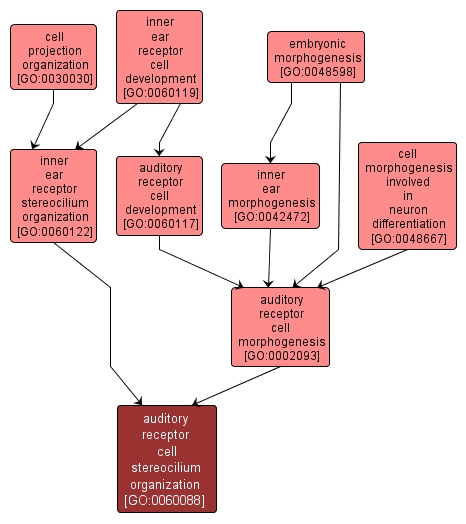GO TERM SUMMARY
|
| Name: |
auditory receptor cell stereocilium organization |
| Acc: |
GO:0060088 |
| Aspect: |
Biological Process |
| Desc: |
A process that is carried out at the cellular level which results in the assembly, arrangement of constituent parts, or disassembly of a stereocilium. A stereocilium is an actin-based protrusion from the apical surface of auditory hair cells. |
Synonyms:
- auditory receptor cell stereocilium organisation
- auditory receptor cell stereocilium organization and biogenesis
|
|

|
INTERACTIVE GO GRAPH
|














